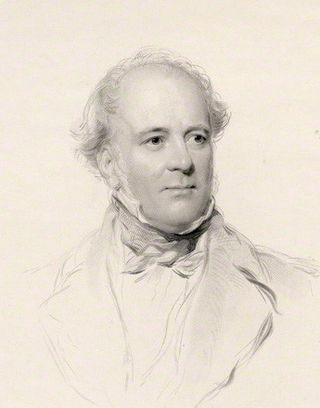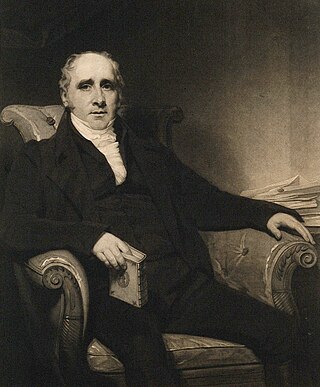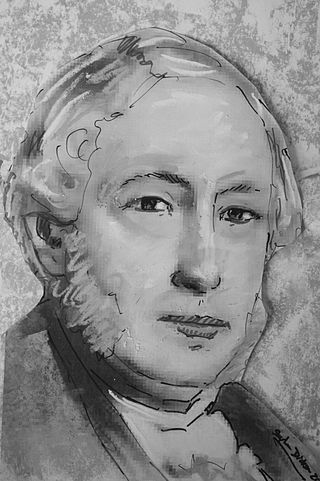
John Kippen Watson FRSE (1818-1891) was a 19th-century Scottish businessman. He is associated with major improvements to Edinburgh's gas lighting including the iconic lamp standard found throughout the New Town.

John Kippen Watson FRSE (1818-1891) was a 19th-century Scottish businessman. He is associated with major improvements to Edinburgh's gas lighting including the iconic lamp standard found throughout the New Town.


He was born on 26 August 1818 in Edinburgh the son of John Watson and his wife Elizabeth Kippen. From around 1833 his father was manager of the Edinburgh Gas Lighting Company. The family lived at 6 Brunton Place close to Calton Hill. [1] On the death of his father (around 1840) he took on his roles of running the Edinburgh Gas Lighting Company
In the 1860s he introduced a new style of gas lamp, specific to Edinburgh, and associated with iconic areas such as Charlotte Square. In 1866 he was elected a Fellow of the Royal Society of Edinburgh his proposer being William Swan. [2]
His company was transferred to Edinburgh Corporation in 1889, putting it into public control. [3] This also involved converting the gas lamps to use with electricity, which had come to the city in 1881. [4]
In later life he lived at 14 Blackford Road in the south of Edinburgh, and was one of the first persons in Edinburgh to have a telephone. [5]
He died on 16 November 1891. He is buried in the grave of George Watson RSA (who appears to have been his uncle) at St Cuthberts Churchyard at the west end of Princes Street. The grave lies in the southmost section against the western wall. His parents are also buried there.
He was married to Jane Elderton Warren.
He was cousin to the artist William Smellie Watson RSA.

The Dean Cemetery is a historically important Victorian cemetery north of the Dean Village, west of Edinburgh city centre, in Scotland. It lies between Queensferry Road and the Water of Leith, bounded on its east side by Dean Path and on its west by the Dean Gallery. A 20th-century extension lies detached from the main cemetery to the north of Ravelston Terrace. The main cemetery is accessible through the main gate on its east side, through a "grace and favour" access door from the grounds of Dean Gallery and from Ravelston Terrace. The modern extension is only accessible at the junction of Dean Path and Queensferry Road.

Andrew Rutherfurd, Lord Rutherfurd, was a Scottish advocate, judge and politician.

The Right Honourable Alexander Maconochie, Lord Meadowbank of Garvock and Pitliver, was a Scottish advocate, judge, landowner and politician. After 1854 he took the surname Maconochie-Welwood.

Thomas Charles Hope was a Scottish physician, chemist and lecturer. He proved the existence of the element strontium, and gave his name to Hope's Experiment, which shows that water reaches its maximum density at 4 °C (39 °F).

George Watson was a Scottish portrait painter and the first president of the Royal Scottish Academy.

The Canongate Kirkyard stands around Canongate Kirk on the Royal Mile in Edinburgh, Scotland. The churchyard was used for burials from the late 1680s until the mid-20th century.

William Bonnar RSA was a Scottish portrait painter.
Professor Andrew Fyfe FRSE FRCSE PRSSA PRMS was a Scottish surgeon and chemist. Following early studies on Fox Talbot's newly created photographic techniques he was one of the first (1839) to work out the theory behind positive rather than negative prints. He had an amateur interest in photography but appears not to have pursued his own theories and limited his experiments to ferns lying on chemical papers.

John Shank More LL.D FRSE RSA (1784–1861) held the Chair as Professor of Scots Law at the University of Edinburgh from 1843 to 1861. He was involved in the anti-slavery movement and was vice-president of the Royal Scottish Society of Arts.

David Maclagan MD, FRSE, FRCSEd, FRCPE was a prominent Scottish medical doctor and military surgeon, serving in the Napoleonic Wars. He served as President of both the Royal College of Physicians of Edinburgh and the Royal College of Surgeons of Edinburgh. He was Surgeon in Scotland to Queen Victoria.

Robert James Blair Cunynghame of Cronan, FRCSEd, FRSE JP was a prominent Scottish surgeon, physiologist and early forensic scientist in the late 19th century. He served as President of the Royal College of Surgeons of Edinburgh from 1891 to 1893. He is said to have had a calm, beautiful face and his opinion was used as a benchmark to medical thought.

Patrick Small Keir Newbigging FRSE FRSSA FRCSE (1813–1864) was a Scottish surgeon and general practitioner. He was President of the Royal Medical Society and of the Royal Scottish Society of Arts. Together with his father, Sir William Newbigging he formed one of the few father-son pairs of former Presidents of the Royal College of Surgeons of Edinburgh. His observations on the origin of the heart sounds and of the apex beat of the heart made a significant contribution to the debate.

Peter David Handyside FRSE FRCSE (1808–1881) was a Scottish surgeon and anatomist. He was president of the Royal Medical Society in 1828. He won the Harveian Society Medal in 1827. He was also president of the Medico-Chirurgical Society of Edinburgh in 1871.
Robert Edmund Scoresby-Jackson FRSE FRCPE FRCSE (1833–1867) was a short-lived but influential British physician and historian. He specialised in the effects of climate upon health.
Thomas Kinnear FRSE (1796–1830) was a Scottish banker and Director of T. Kinnear & Sons. He was also a Director of the Bank of Scotland.

Sir William Newbigging was a Scottish surgeon who served as President of the Royal College of Surgeons of Edinburgh from 1814 to 1816. He was a keen amateur geographer.

Alexander MacDuff of Bonhard WS FRSE was a Scottish lawyer, landowner and agriculturalist.

James MacGregor FRSE (1832–1910) was a Scottish minister and philanthropist. He was Moderator of the General Assembly of the Church of Scotland in 1891. In 1886 he was made Chaplain in Ordinary to Queen Victoria, in 1901 Chaplain to King Edward VII, and in 1910 to King George V, serving three monarchs in all.
Dr William Robertson FRSE FRCPE was a 19th-century Scottish physician remembered as a statistician and amateur photographer.
James Stark of Huntfield FRSE FRCPE FSSA was a 19th-century Scottish physician who became the first Superintendent of Statistics in Scotland. He created the concept of vital statistics in 1854.